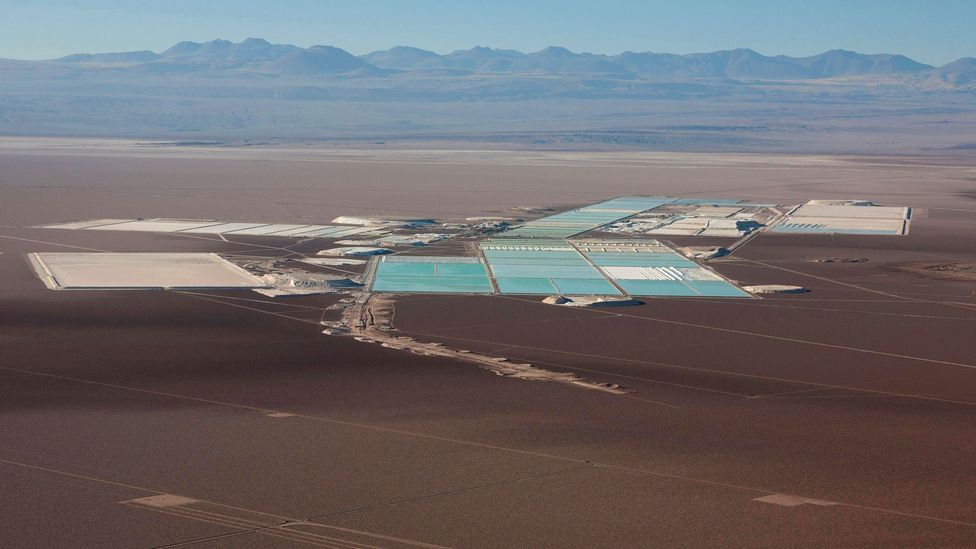Beneath the screen that you are reading this on, there could be the distilled essence of a salt plain.
Millions of years ago, volcanoes deposited minerals over vast tracts of South America. Later, water leached through the rock to form massive lakes. Cycles of evaporation and deposition followed, leaving vast plains of salt behind – infused with one of the world's most sought-after minerals: lithium.
With the rapid rise in battery usage in electronic devices and electric cars, the demand for lithium and other constituent materials is accelerating. As BBC Future has previously reported, it is enabling mining companies to look in new places, such as the deep ocean or in previously exploited mines. But our focus today is how it is changing the fortunes – and specifically, the landscapes – of those countries that have it in abundance.
In Bolivia and Chile, the high tonnage of lithium embedded in the salt plains has given rise to massive facilities. From the air, the evaporation pools associated with the mineral's extraction dot the landscape like colours in a painter's palette. In this edition of our photography series Anthropo-Scene, we explore these places, whose striking features have inspired various artists, writers and architects.
For more extreme photos, go to BBC.com

Meanwhile, places like the Sociedad Quimica Mineral (SQM) lithium mine have helped Chile to become one of the world's primary producers (Credit: Alamy)

The SQM mine on the Salar de Atacama rivals Bolivia's as one of the world's largest lithium deposits (Credit: Alamy)






